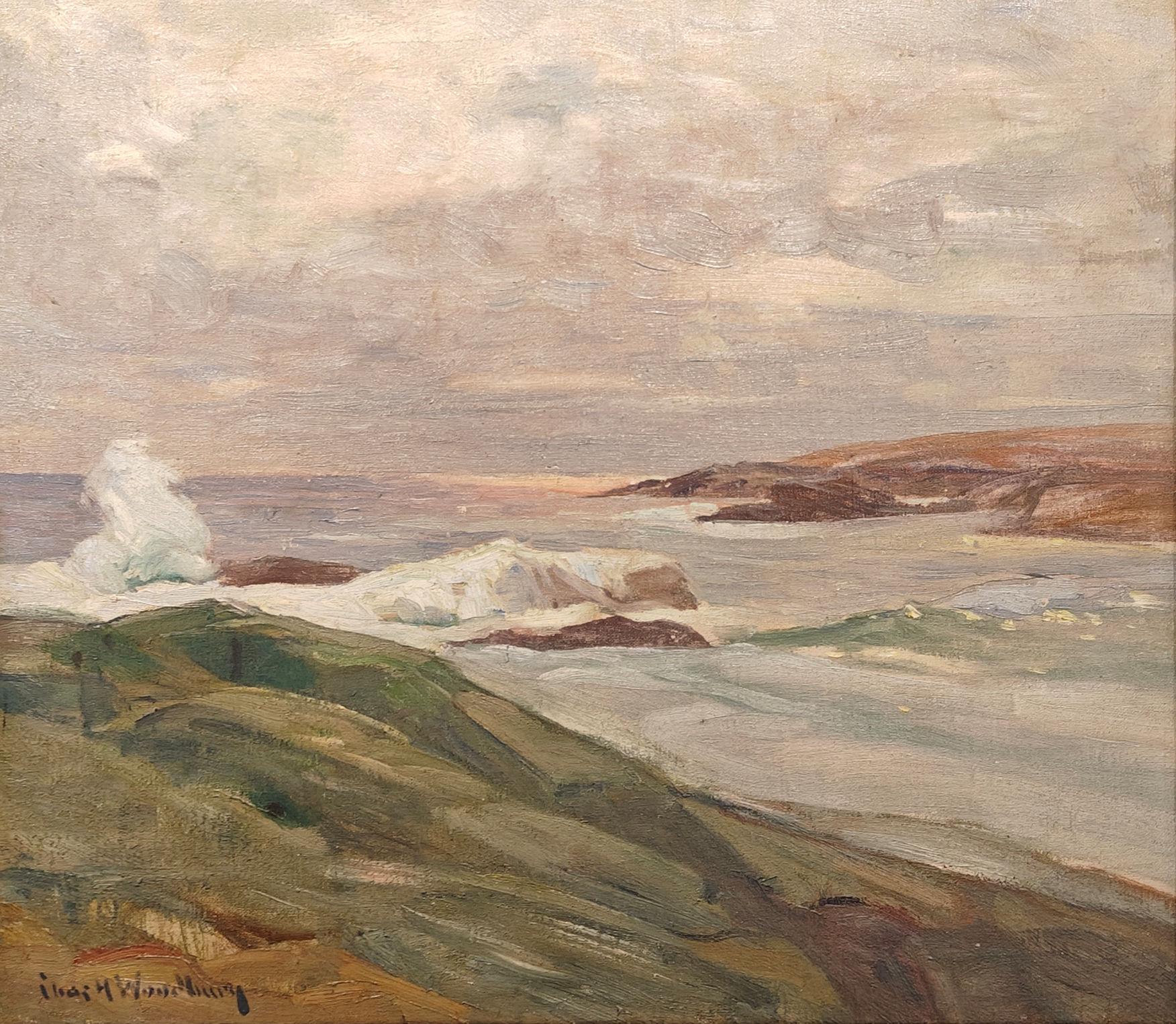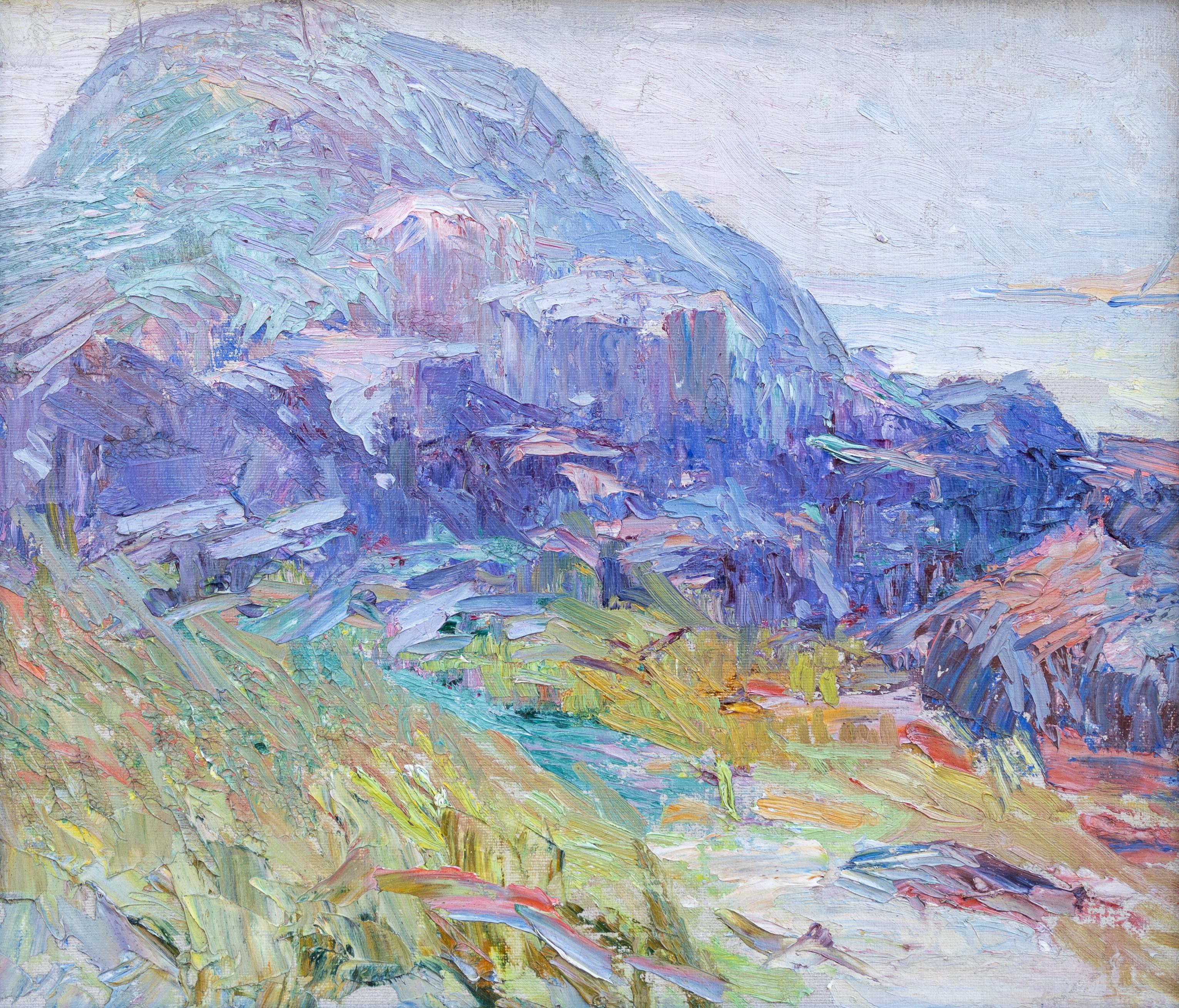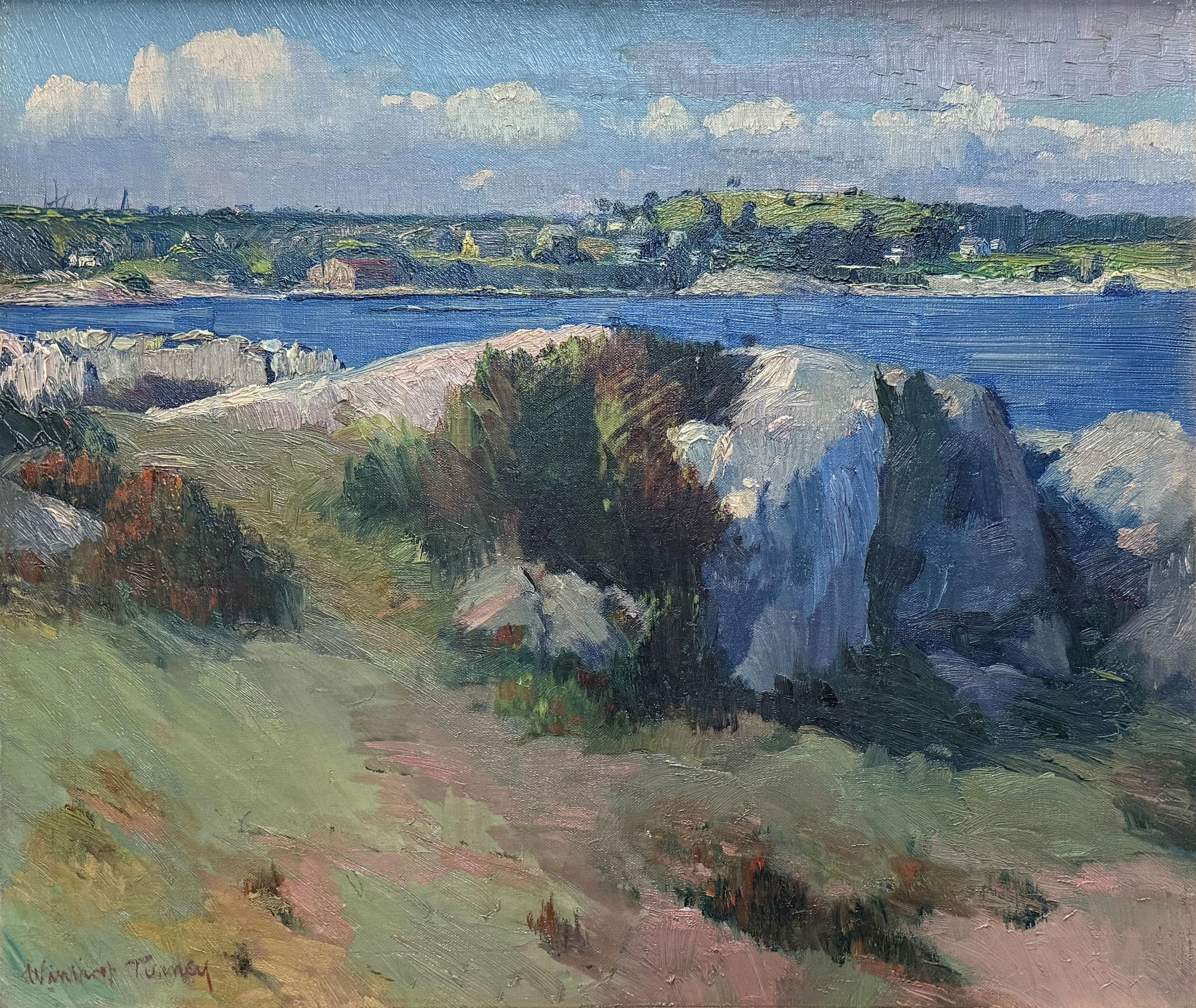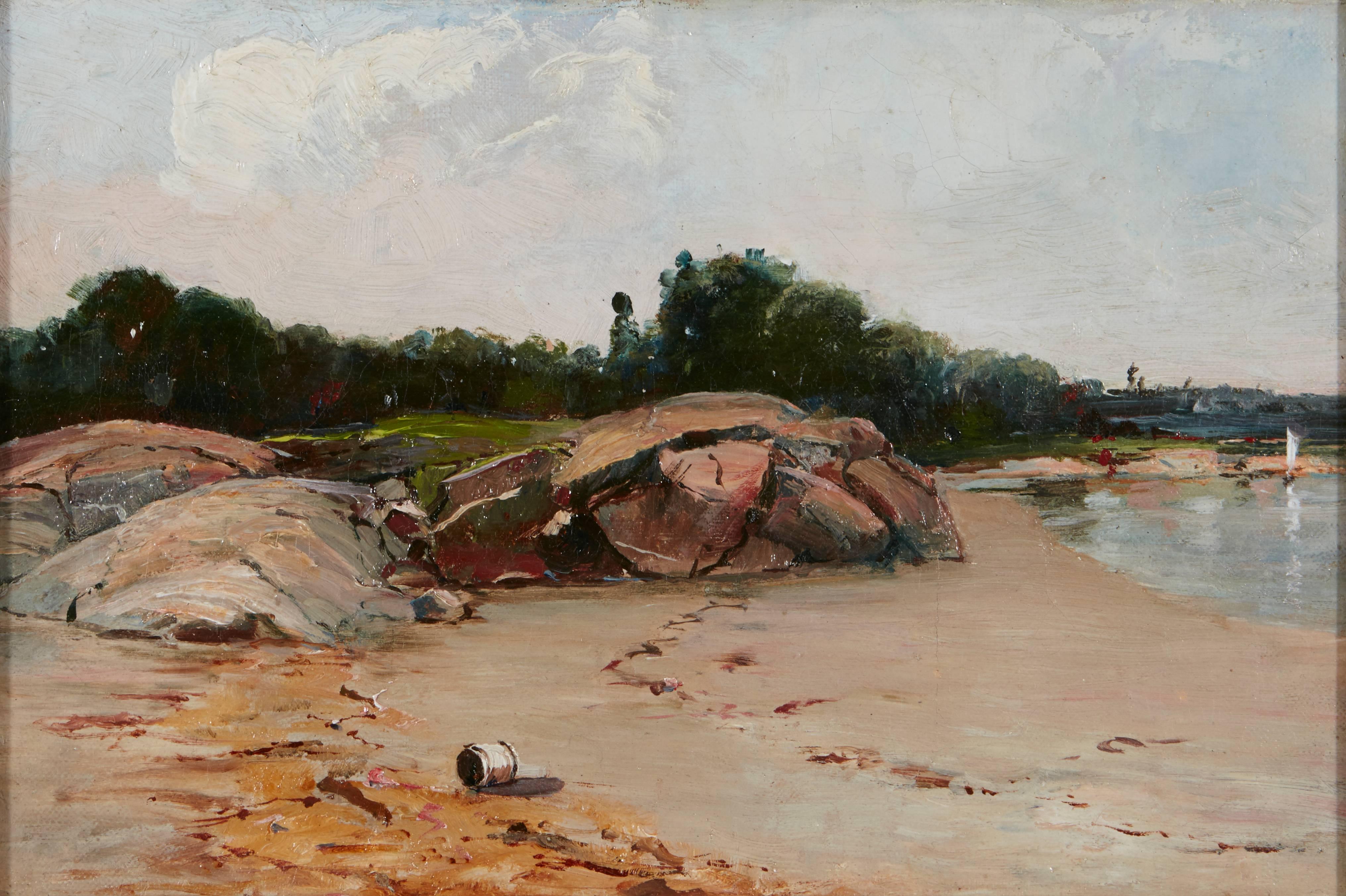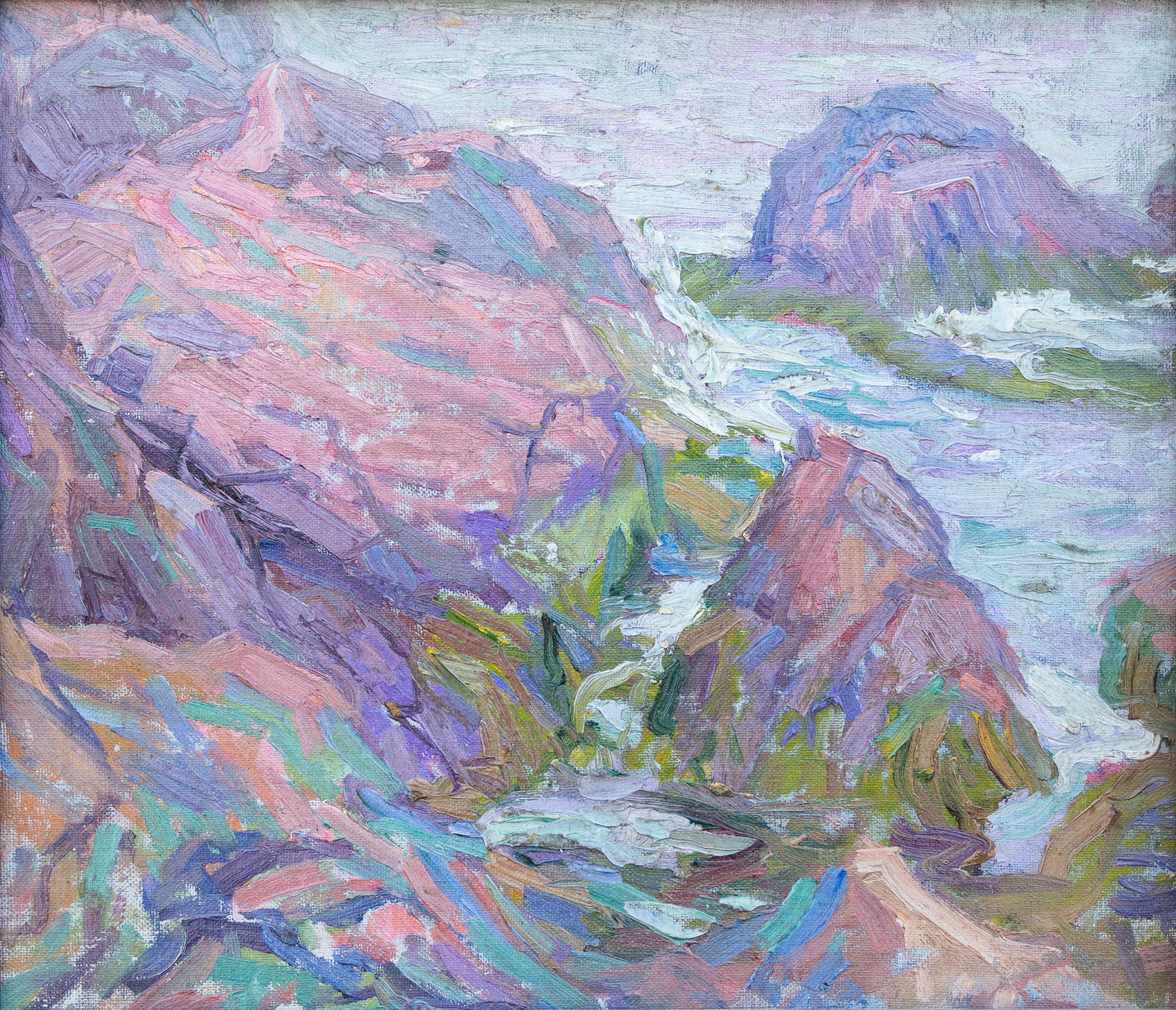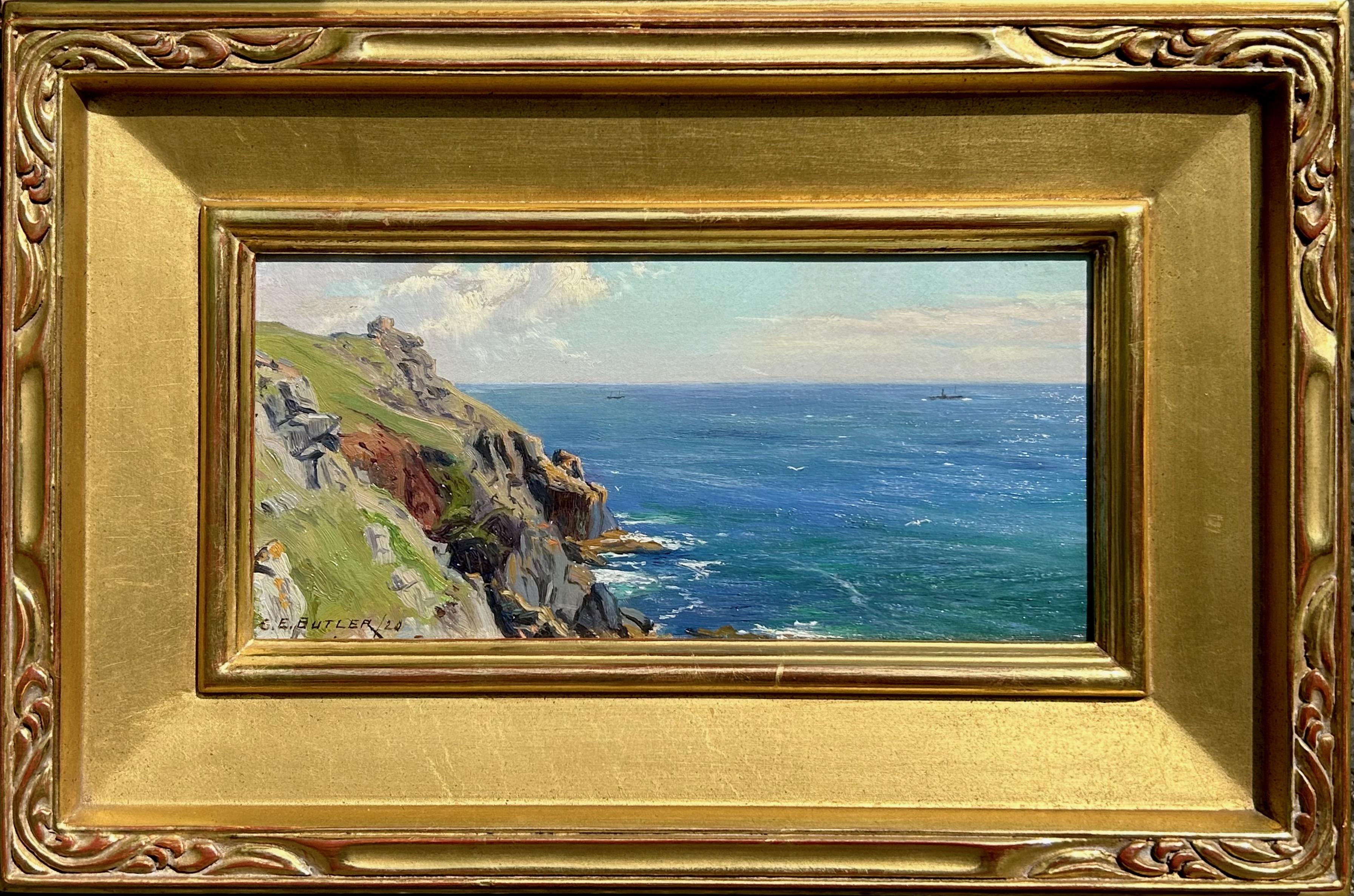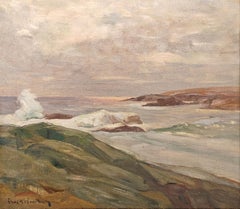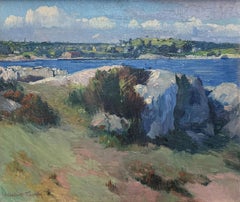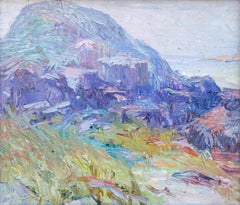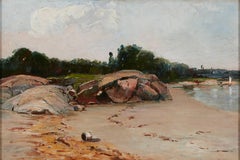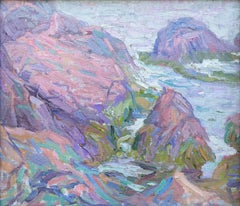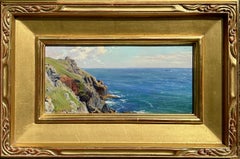Items Similar to "Stony Cove and Headland, " Henry Ward Ranger, Coastal Landscape, Seascape
Want more images or videos?
Request additional images or videos from the seller
1 of 9
Henry Ward Ranger"Stony Cove and Headland, " Henry Ward Ranger, Coastal Landscape, Seascape1910
1910
$25,000
£18,595.77
€21,771.98
CA$34,883.49
A$39,035.60
CHF 20,382.56
MX$479,902.12
NOK 257,149.47
SEK 241,976.39
DKK 162,435.64
Shipping
Retrieving quote...The 1stDibs Promise:
Authenticity Guarantee,
Money-Back Guarantee,
24-Hour Cancellation
About the Item
Henry Ward Ranger (1858 - 1915)
Stony Cove and Headland, 1910
Oil on canvas
28 x 36 inches
Signed lower right
Provenance:
McDonough Gallery, New York
William Macbeth Galleries, New York
American Art Association, The Completed Pictures Left by the Late Henry Ward Ranger, 1917, Lot 72
A key person in the establishment of the Old Lyme, Connecticut art colony in 1899, Henry Ward Ranger is regarded as the leader of the Tonalist movement in America and was a leading painter in this country in the late 19th and early 20th-centuries.
He was born in Geneseo and raised in Syracuse, New York, and in 1873, enrolled in the College of Fine Arts at Syracuse University, where his father was a professor of photography and drawing. Two years later, he became a re-toucher of paintings in his father's studio and did not earn a college degree.
He also spent much time in New York City, where he was a writer of music criticism and visited galleries, where he had his first exposure to French Barbizon painting. During much of the 1880s, he painted watercolors of marine subjects, and exhibited those in New York City, Boston, and Paris.
As a student in France, he became greatly interested in the Barbizon School of painters, and then a trip to The Hague, Holland, was even more influential when he met a large colony of Dutch painters called "The Hague School", whose emphasis was on Realism and Tonalism.
Their soft, Atmospheric and Tonalist style of sombre colors seemed to suit him. However, his soft colors later became a special problem for anyone trying to restore his paintings as it was difficult to distinguish original color from soil on canvases. He did his sketches "en plein air" but finished his paintings in his studio and often exhibited his sketches and paintings together.
In 1885, Ranger moved to New York City and took up easel painting increasingly favoring oils over watercolors. In 1892, he had a one-man exhibition at the Knoedler Galleries in New York City. Many of his works in that show were forest interiors and tree studies.
Gradually his palette lightened with color and luminosity suggesting the influence of George Inness. In the summer of 1899, Ranger discovered Florence Griswold's boardinghouse in Old Lyme, Connecticut, and he returned in the summer of 1900. With his influence and the friendship of Florence Griswold, he became the leader of the artists' colony of Old Lyme, "an American version of Barbizon" (Lowrey 162) for three years.
However, the prevalent style changed to Impressionism with the 1903 arrival of Childe Hassam. He became disenchanted with painting at Old Lyme with the arrival of Childe Hassam in 1903 and the subsequent influence of his Impressionist style. In protest of the plein-air, fast painting, and lightened palette and abstraction of these Impressionists, Ranger, in 1905, moved farther down the coast to Noank, Connecticut near the mouth of the Mystic River.
Like many of his associates, he also maintained a studio in New York City where he was very prominent and often lectured and wrote about art and took an active part in the art community. He was a member of the National Academy of Design and the National Arts Club, and he wrote articles about art that were published.
When Henry Ward Ranger died in 1916, he was a childless widower and left his estate to the National Academy of Design to establish the Ranger Fund whose income was to purchase the works of living American artists beyond the age of forty-five.
- Creator:Henry Ward Ranger (1858 - 1916, American)
- Creation Year:1910
- Dimensions:Height: 35 in (88.9 cm)Width: 43 in (109.22 cm)
- Medium:
- Movement & Style:
- Period:
- Condition:
- Gallery Location:New York, NY
- Reference Number:1stDibs: LU1841210536772
Henry Ward Ranger
A key person in the establishment of the Old Lyme, Connecticut art colony in 1899, Henry Ward Ranger is regarded as the leader of the Tonalist movement in America and was a leading painter in this country in the late 19th and early 20th-centuries. He was born in Geneseo and raised in Syracuse, New York, and in 1873, enrolled in the College of Fine Arts at Syracuse University, where his father was a professor of photography and drawing. Two years later, he became a re-toucher of paintings in his father's studio and did not earn a college degree. He also spent much time in New York City, where he was a writer of music criticism and visited galleries, where he had his first exposure to French Barbizon painting. During much of the 1880s, he painted watercolors of marine subjects, and exhibited those in New York City, Boston, and Paris. As a student in France, he became greatly interested in the Barbizon School of painters, and then a trip to The Hague, Holland, was even more influential when he met a large colony of Dutch painters called "The Hague School", whose emphasis was on Realism and Tonalism. Their soft, Atmospheric and Tonalist style of sombre colors seemed to suit him. However, his soft colors later became a special problem for anyone trying to restore his paintings as it was difficult to distinguish original color from soil on canvases. He did his sketches "en plein air" but finished his paintings in his studio. In 1885, Ranger moved to New York City and took up easel painting increasingly favoring oils over watercolors. In 1892, he had a one-man exhibition at the Knoedler Galleries in New York City. Many of his works in that show were forest interiors and tree studies. Gradually his palette lightened with color and luminosity suggesting the influence of George Inness. In the summer of 1899, Ranger discovered Florence Griswold's boardinghouse in Old Lyme, Connecticut, and he returned in the summer of 1900. With his influence and the friendship of Florence Griswold, he became the leader of the artists' colony of Old Lyme, "an American version of Barbizon" for three years. However, the prevalent style changed to Impressionism with the 1903 arrival of Childe Hassam. He became disenchanted with painting at Old Lyme with the arrival of Childe Hassam in 1903 and the subsequent influence of his Impressionist style. In protest of the plein-air, fast painting, and lightened palette and abstraction of these Impressionists, Ranger, in 1905, moved farther down the coast to Noank, Connecticut near the Mystic River. Like many of his associates, he also maintained a studio in New York City where he was very prominent and often lectured and wrote about art and took an active part in the art community. He was a member of the National Academy of Design and the National Arts Club, and he wrote articles about art that were published.
About the Seller
5.0
Platinum Seller
Premium sellers with a 4.7+ rating and 24-hour response times
Established in 2022
1stDibs seller since 2022
108 sales on 1stDibs
Typical response time: <1 hour
- ShippingRetrieving quote...Shipping from: New York, NY
- Return Policy
Authenticity Guarantee
In the unlikely event there’s an issue with an item’s authenticity, contact us within 1 year for a full refund. DetailsMoney-Back Guarantee
If your item is not as described, is damaged in transit, or does not arrive, contact us within 7 days for a full refund. Details24-Hour Cancellation
You have a 24-hour grace period in which to reconsider your purchase, with no questions asked.Vetted Professional Sellers
Our world-class sellers must adhere to strict standards for service and quality, maintaining the integrity of our listings.Price-Match Guarantee
If you find that a seller listed the same item for a lower price elsewhere, we’ll match it.Trusted Global Delivery
Our best-in-class carrier network provides specialized shipping options worldwide, including custom delivery.More From This Seller
View All"Coastal Seascape" Charles Herbert Woodbury, New England Boston School Landscape
By Charles Herbert Woodbury
Located in New York, NY
Charles Herbert Woodbury
Coastal Seascape
Signed lower left
Oil on canvas
17 x 20 inches
Charles Herbert Woodbury, born in Lynn, Massachusetts in 1864, is recognized as the founder...
Category
1890s American Impressionist Figurative Paintings
Materials
Canvas, Oil
"Pigeon Hill, Rockport" Winthrop Duthie Turney, North Eastern American Landscape
Located in New York, NY
Winthrop Duthie Turney
Pigeon Hill, Rockport
Signed lower left
Oil on canvas
20 x 24 inches
Exhibited
New York, National Academy of Design, Artists of America, Sixth Annual Exhibition, 1949.
Winthrop Duthie Turney was born in New York City and received his education at the Art Students League. He was affiliated with the Fifteen Gallery...
Category
1920s American Impressionist Figurative Paintings
Materials
Canvas, Oil
"Maine Coast, Ogunquit, " Ernest Albert, American Impressionism, Seascape
By Ernest Albert
Located in New York, NY
Ernest Albert (1857 - 1946)
Maine Coast, Ogunquit, 1937
Oil on canvasboard
18 x 20 inches
Signed and dated lower right; titled on a label on the reverse
A distinguished theatrical and scenic designer who also became a landscape painter and muralist, Ernest Albert worked in New York, St. Louis, and Chicago.
He was born in Brooklyn, New York in 1857, and showing early talent, received the Graham Art...
Category
1930s American Impressionist Landscape Paintings
Materials
Oil, Board
"Road to Provincetown, " Henry MacGinnis, Massachusetts Landscape
By Henry Ryan MacGinnis
Located in New York, NY
Henry Ryan MacGinnis (1875 - 1962)
Road to Provincetown, 1924
Oil on canvas
25 x 30 inches
Signed lower right; titled and dated on the stretcher
Housed in a Stanford White Newcomb-Macklin frame.
Exhibited:
Trenton, New Jersey, School of Industrial Arts Provincetown by Professor MacGinnis, 1924.
Henry Ryan MacGinnis, 1875-1962, was born in Indiana and began his art studies under the eminent Hoosier artists T.C. Steele, J.O. Adams and William Forsyth. One of his earliest exhibitions was in 1896, when he showed his work with other notable Hoosier artists such as T.C. Steele, J. Ottis Adams...
Category
1920s American Impressionist Landscape Paintings
Materials
Canvas, Oil
"La Marre de Soire, " George Leonard, American Impressionist, Beach Seascape
Located in New York, NY
George Henry Leonard, Jr. (1869 - 1928)
La Marre de Soire
Oil on canvas
15 x 21 3/4 inches
Signed lower right
A landscape painter--primarily using a late impressionist loose stroke as his main mode of expression--Leonard drew not only upon French influences, but also the American school of impressionism characterized by Frank Boggs...
Category
1910s American Impressionist Landscape Paintings
Materials
Canvas, Oil
"Low Tide - Brittany, France, " Henriette Oberteuffer, Coastal Landscape
By Henriette Amiard Oberteuffer
Located in New York, NY
Henriette Amiard Oberteuffer (1878 - 1962)
Low Tide - Brittany, France
Oil on canvasboard
18 x 21 1/2 inches
Signed lower right
Painter, printmaker, and teacher Henriette Amiard Oberteuffer (1878-1962) was born in Le Havre, France and studied at the Academie Julian in Paris with Jean-Paul Laurens and Benjamin Constant. She moved with her husband and fellow artist George Oberteuffer...
Category
Early 20th Century American Impressionist Landscape Paintings
Materials
Oil, Board
You May Also Like
"Race Point 1" Impressionistic Coastal Landscape Paintings of Rocks and Ocean
By William Henry Dethlef Koerner
Located in Austin, TX
An impressionistic, antique landscape painting depicting the rugged coastal beauty of Race Point Beach, Massechusets. The rocky coastline and rushing waves are rendered in luminous ...
Category
1920s American Impressionist Landscape Paintings
Materials
Oil, Board
Rocky Coast
By Charles Edwin Lewis Green
Located in Boston, MA
Oil on canvas, 8 x 12 inches
Category
Late 19th Century American Impressionist Landscape Paintings
Materials
Oil
"Race Point 2" Impressionistic Coastal Landscape Paintings of Rocks and Ocean
By William Henry Dethlef Koerner
Located in Austin, TX
An impressionistic, antique landscape painting depicting the rugged coastal beauty of Race Point Beach, Massechusets. The rocky coastline and rushing waves are rendered in luminous ...
Category
1920s American Impressionist Landscape Paintings
Materials
Oil, Board
Penolver Head, Lizard Peninsula Landscape
Located in Fredericksburg, VA
This dynamic seascape by Charles Ernest Butler captures the rugged cliffs of Penolver Head on the Lizard Peninsula, where land meets the vast, glistening ocean. The bold, expressive ...
Category
Early 20th Century Hudson River School Landscape Paintings
Materials
Canvas, Oil
Monhegan Headlands
By Jay Hall Connaway
Located in Wiscasset, ME
Although born in Liberty, Indiana, Jay Hall Connaway (1893-1970) was fascinated by coastal life and marine scenery, an attraction that had profound effects on his life and artwork. A...
Category
1940s Impressionist Landscape Paintings
Materials
Oil, Board
Rugged California Coast - 1930's Seascape
By Charles Morris
Located in Soquel, CA
Charming 1930's impressionistic seascape of blue waves crashing on a rocky shore with distant sail boats on the horizon by Charles Morris (American, b-1889) c.1930. Signed lower left...
Category
1930s American Impressionist Landscape Paintings
Materials
Linen, Oil
$1,500 Sale Price
20% Off
More Ways To Browse
Coastal Art Large
19th Century French Barbizon Landscape Painting
Ward Oil Paintings
Dutch 1900 Painting
Dutch Paintings Hague School
Dutch Seascape
Antique Original Paintings Boston
Dutch Painting Oil Seascape
36x72 Oil Painting
Michael Klein
P Morgan Art
1920s Beach Painting
Aspen Mountain Art
Louis Claude Artist
Memphis Tn
Royal Navy Painting
Blue Crock
Dune In Oil Painting
